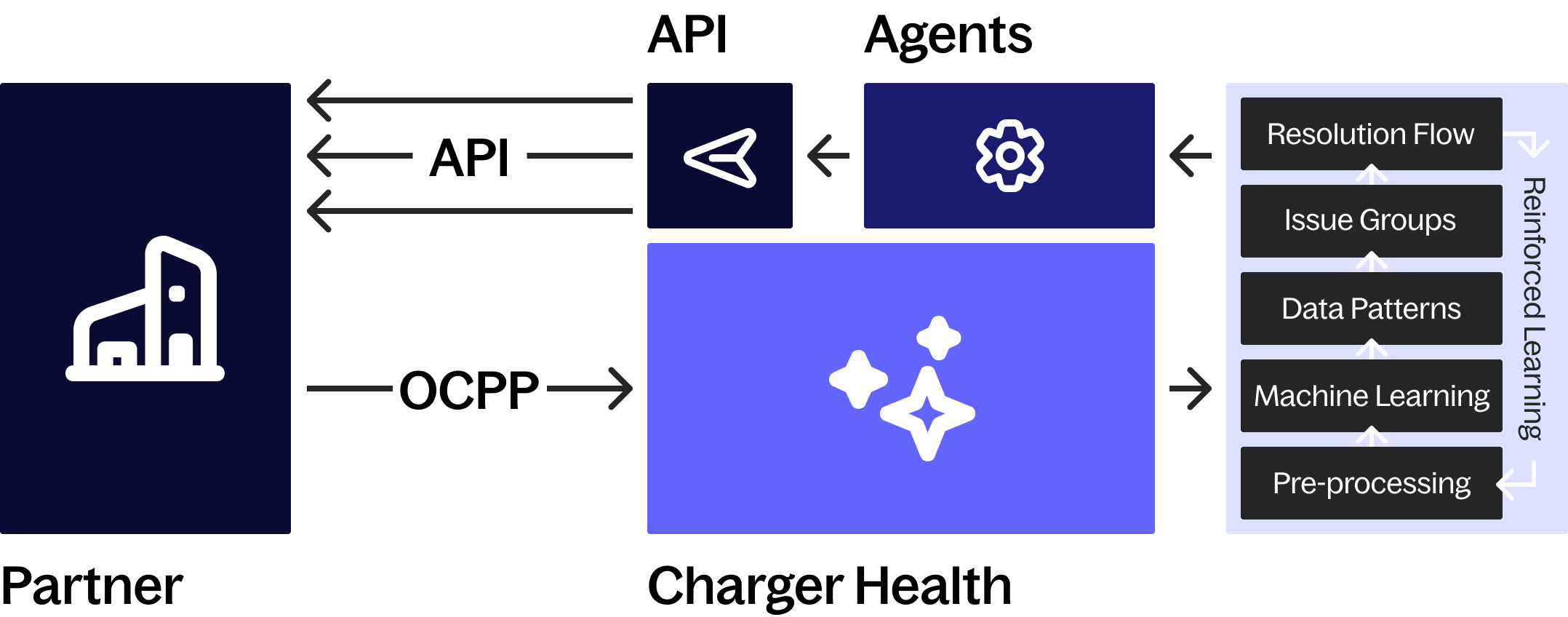Our end-to-end system transforms data into structured, actionable insights in real-time, through advanced preprocessing flows.
An intelligence layer applies machine learning models to detect both visible and hidden charger issues, categorising all issues with precision.
A comprehensive agentic infrastructure automatically handles all issues, intelligently sending reboots, updating firmwares, as well as creating, assigning, updating and escalating tickets - all in real-time.

Billion OCPP Logs
Unique Charging Sessions
Monitoring Active Chargers
Our system can process your data logs, using advanced algorithms and machine learning models to intelligently enrich the datasets, providing you with improved insights, automatic fault handling, outlier detections and future fault predictions - all automated and in real-time.